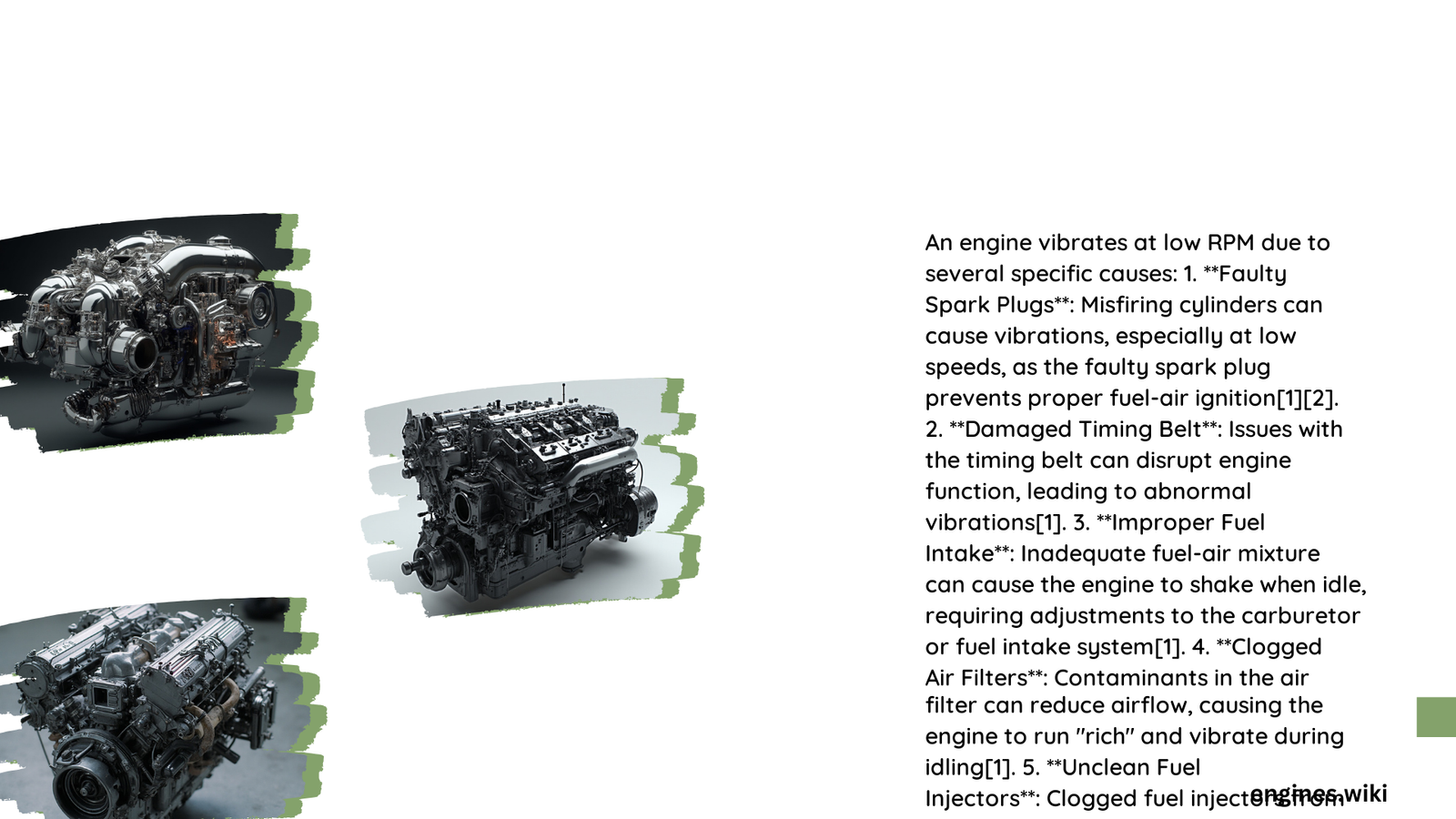Engine vibrations at low RPM can be a complex mechanical issue stemming from multiple potential sources. When your vehicle experiences unusual shaking or rough idling, it signals underlying problems that require immediate attention. These vibrations often indicate mechanical stress, component wear, or systemic performance challenges that can compromise your vehicle’s overall functionality and driving experience.
What Causes Engine Vibrations at Low RPM?
Why Do Spark Plugs Contribute to Engine Vibration?
Spark plugs play a crucial role in engine performance. When they malfunction, they can cause significant vibration issues:
- Worn Electrode Surfaces: Reduce spark efficiency
- Carbon Buildup: Interrupts consistent electrical discharge
- Incorrect Gap Measurements: Prevents proper fuel ignition
| Spark Plug Condition | Vibration Intensity | Recommended Action |
|---|---|---|
| New/Clean | Minimal | Maintain Regular Intervals |
| Moderate Wear | Moderate | Consider Replacement |
| Severe Wear | High | Immediate Replacement Required |
How Do Motor Mounts Impact Low RPM Vibrations?
Motor mounts serve as critical stabilization components for engine positioning. When compromised, they can create significant vibration problems:
- Rubber Deterioration: Leads to increased engine movement
- Structural Weakening: Allows excessive engine displacement
- Material Fatigue: Reduces shock absorption capabilities
What Role Do Fuel System Components Play?
Fuel delivery systems directly influence engine smoothness:
- Clogged Fuel Injectors: Disrupt precise fuel distribution
- Low Fuel Pressure: Creates inconsistent combustion
- Contaminated Fuel Filters: Restrict proper fuel flow
Can Vacuum Leaks Cause Vibration?
Vacuum leaks introduce uncontrolled air into the engine system:
- Disrupted Air-Fuel Ratio: Causes irregular combustion
- Potential Sensor Miscalculations: Triggers incorrect engine management responses
- Unmetered Air Intake: Creates unpredictable performance characteristics
Diagnostic Strategies for Engine Vibration

How to Professionally Diagnose Vibration Issues?
Professional diagnosis involves:
– Comprehensive scan tool evaluation
– Visual mechanical inspection
– Precision measurement techniques
– Component-specific testing protocols
What Are Advanced Troubleshooting Techniques?
- Oscilloscope Analysis: Detailed electrical system examination
- Compression Testing: Verify cylinder performance
- Vibration Frequency Mapping: Identify specific mechanical anomalies
Prevention and Maintenance Recommendations
How Can Owners Minimize Engine Vibration Risks?
- Regular Maintenance Schedule
- Timely Component Replacement
- Quality Fuel Usage
- Professional Periodic Inspections
Technical Insights
Engine vibrations typically occur within 600-1200 RPM ranges, representing critical performance thresholds. Understanding these nuanced mechanical interactions requires systematic approach and precise diagnostic methodology.
Cost Considerations
Repair costs for vibration-related issues can range:
– Minor Repairs: $100 – $300
– Moderate Interventions: $300 – $700
– Complex Repairs: $700 – $1500
Conclusion
Addressing engine vibrations requires comprehensive understanding, systematic diagnosis, and targeted interventions. Professional assessment remains the most reliable approach to resolving these complex mechanical challenges.
